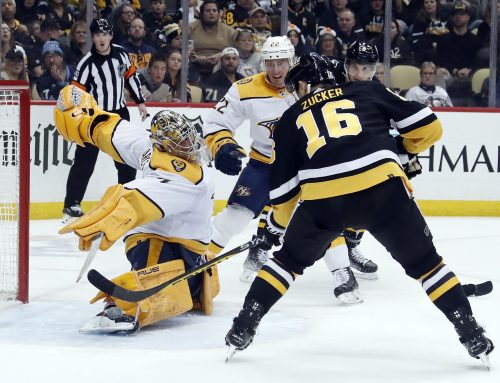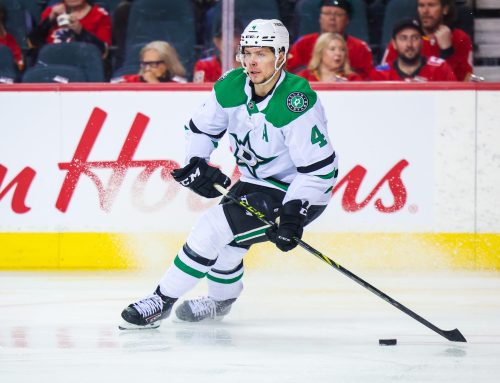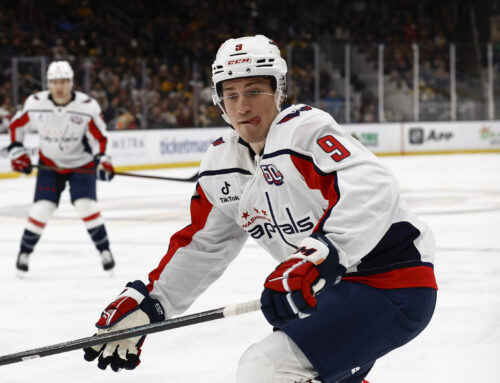
Incorporating high salary stars to your salary cap league teams.
In cap leagues it is very important to spend your available money efficiently. However, what is even more important is to assemble a roster that will win your league’s championship. If you only rely on going cheap you could be left with a team that lacks the necessary firepower. Unfortunately, the league’s best producers are going to cost you a lot of cap space.
The star players should not be avoided and drastic cost-cutting measures should not be taken in the early rounds. You need to maximize production. Instead, focus your cap bargain research on the later rounds when the best player available is less obvious. The bargain players that you choose to target depends on the size of your league and the format. Here is a chart of Dobber’s point projections for forwards in the upcoming season (40 or more points – no names attached) along with each player’s cap hit:

Obviously, the top players are going to cost the most to own. The farther you move away from the very best players, the more variety you get in cap hit figures. At the 75-point range you begin to see a handful of players who are paid less than $4 million and as you drop below the 55-point mark you see a ton of players who cost less than $2 million. Your early selections will impact how drastically you will have to cut costs in later rounds. With a lot of research and a bit of luck you should be able to find a suitably cheap alternative without sacrificing many points, if any.
To get a better understanding of which players might be best to target in your league, here is a different breakdown of the numbers showing the amount of players in each range and their average cap hit:
|
Point Range |
Amount |
Average Cap Hit |
|
40-49 |
68 |
3.17 |
|
50-59 |
60 |
3.99 |
|
60-69 |
26 |
5.08 |
|
70-79
📢 advertisement:
|
23 |
5.55 |
|
80-89 |
6 |
5.80 |
|
90+ |
4 |
8.61 |
In multi-category leagues things become muddy in a good way. In most setups the stars will still be the best players to own but a lot of players who are weaker offensively are valuable to own because of their contributions in other categories. Players such as Derek Dorsett, Chris Neil, Matt Martin and Zac Rinaldo can become very valuable to own and their lack of big offensive numbers keeps their cost in check.
Since the cap hit of a forward is affected most by his ability to put up points, a lot of effective multi-category players will be available at a bargain price. This gives you a ton of options throughout the draft. You should have an easier time making ends meet in this type of league since more players will be relevant. It will be up to you to use your budget to find the perfect mix for the league that you are in.
In the end, it is important to stick to your mission on draft day, which is to win your pool. You should not be afraid to draft Sidney Crosby because of his $8.7-million cap hit. There is a good chance that Crosby will be the best player to own this year, in most formats, even if he misses a chunk of games to an injury. That is not something that you can pass up in exchange for a couple million in savings early in the first round of your draft.
The contrasting ideas of acquiring stars and seeking cap bargains need to be used together to make your team better. In points-only leagues the stars will be complimented by cheaper and riskier depth options. Meanwhile, in multi-category leagues your stars will provide most of the offensive firepower while your cheaper depth can be composed of agitators and all-around players to fill the peripheral stats.
In both cases you know what you are getting from your top players. They have a track record and are paid accordingly. The rest of your roster is where things are more likely to go wrong. It will be up to you to seek additional bargain producers if you are in a bind. In competitive leagues getting the most out of your final roster spots can be the difference between winning it all and falling short.
This article covers forwards only but past articles can give insight on how to approach the defense and goaltending.
Previously from Eric Daoust:
Keeper League Salary Cap Gems (Part IV)
Inexpensive (But Valuable) Keeper League Investments





 CHI
CHI SEA
SEA FLA
FLA DAL
DAL WPG
WPG CBJ
CBJ L.A
L.A MIN
MIN DET
DET OTT
OTT
